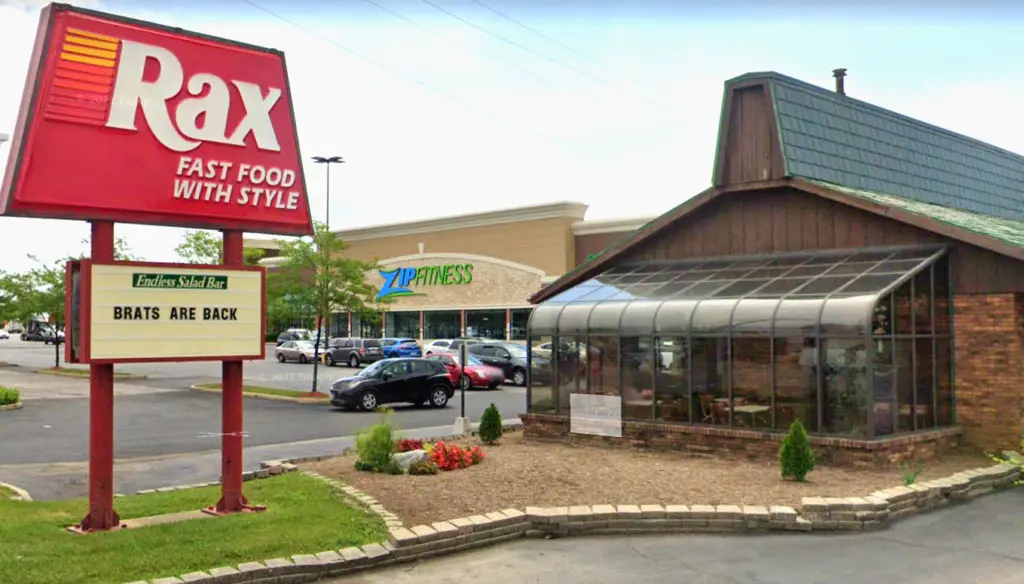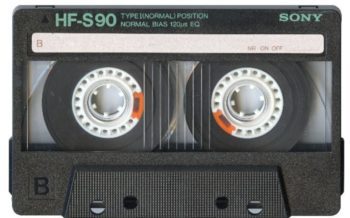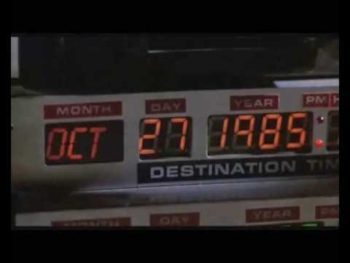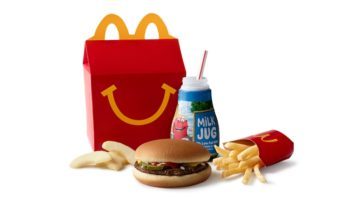
Depending on where you live, the name Rax might not mean much to you. But they were actually a significant player in the fast-food game during the 1980s.
Rax was a mid-western restaurant chain that came to prominence in the 1980s. They started with roast beef sandwiches but then offered a wide variety of foods and interior changes that led to a lack of focus and bankruptcy by the 1990s.
We didn’t have Rax where I lived, but I vaguely remember seeing commercials through various American channels. But even as a young kid, I didn’t know precisely what this restaurant was. It had roast beef sandwiches, but was it an Arby’s? Then there were other items, such as baked potatoes, a pasta and salad bar, and even pizza.
In the 1980s, was Rax trying to be all things to all people? In the food world, that’s never a good way to go. But I do see the mindset behind it. You won’t be able to compete with the big boys, so maybe you can create your own niche and develop your own customer base if you take a little bit from each.
In the 80s, the fast-food landscape wasn’t as vast as it is now. And each company was known for one specific item. McDonald’s, Wendys, and Burger King were obviously burgers, KFC was chicken, and Taco Bell and Pizza Hut were also obvious.
Rax had been around since the late 60s but rose to prominence in the 80s. The all-things-to-all-people approach wasn’t a bad idea, so what happened? Were they trying to be a fast-food restaurant for adults? Was excluding certain customers the right approach? And what about “Mr.Delicious;” possibly the weirdest character/mascot/spokesperson you’ll ever see. This is the story of Rax: a fast-food restaurant that may have been ahead of its time.
The History of Rax
The origins of Rax fast-food restaurants go all the way back to the 1960s. But back then, it was known as Jax Roast Beef. Jack Roschman started the company in Springfield, Ohio. Roschman didn’t begin in fast-food but saw what a good business it was. He even tried to convince Ray Kroc to sell him the rights to McDonald’s for the entire state of Ohio.
Before Jax, Roschman was involved with the creation of the Burger Chef chain. This is another fast-food franchise you may have never heard of, but there was a lot of hope for it to become the next McDonald’s. The two companies were actually neck-and-neck until the 1970s when McDonald’s franchises began to outnumber them. If you are a fan of MadMen, you may remember the big focus on the Burger Chef ad campaign in season 7.
While working on Burger Chef, Roschman still had time to start his own franchise: Jax Roast Beef Sandwich. In 1969–the summer of love–General foods eventually stepped in and bought both Burger Chef and Jax, which they changed to Rix Roast Beef Sandwich. There weren’t many Rix restaurants, but a company called the Restaurant Administration Corporation or RAC then bought them. They returned to the name Jax but then decided the name Rax was not only better for trademarking and advertising, but had a connection to their company’s name.
The first official Rax opened in Columbus, Ohio. Going into the 1980s, the goal was to focus on just the roast beef sandwiches, and the company began to franchise. By 1982, there were 225 locations. By 1984, they opened their 300th restaurant.
Roast beef was obviously at the core of Rax since way back in 1967, but going into the 80s, they wanted to add in a few more items. In 1981, they brought in baked potatoes and their first salad bars. In 1984, they took things up another notch.
The company peaked in the mid-80s with over 500 locations in 38 different states. But this is when the company started to take on too much. A multitude of new food options were added, and the company wanted to make aesthetic changes to stand out from the rest.
Creating “the Champagne” of Fast-Food Restaurants
Rax wanted to be the option for going out for fast food, but when you wanted a better dining experience than just the Golden Arches. Rax would be the place for when Burger King or McDonald’s felt beneath you. Their goal was to be the option for when you didn’t want to make reservations at a real–and more expensive–place.
As Rax was beginning to peak in the 80s, they made this new direction their priority. The dining rooms would be given the biggest overhaul. They wanted to make it seem as if you were in a Michelin star restaurant, even though you were eating an endless dessert bar.
They transformed the dining rooms from cafeteria-style (like the other guys were doing) and they added in features like live plants and solariums. They brought in many wood elements to give Rax a more upscale and refined look.
This was what was meant by trying to become “the Champagne of restaurants.” But this can be a problem in the fast-food world. Let’s be honest, we know why we go to a fast-food restaurant and what to expect. You get in, you scarf it down, and you get out. Sure, it’s not the greatest food, but it serves its purpose: if you only have 30 minutes for lunch, they make for a great option. Fast food has always appealed to the working class and students who don’t have a lot of time to spare. By making these upscale changes, Rax was driving away that core customer base.
This all seemed to be intentional. Did they want to appeal to a new crowd, which seemed to be more sophisticated adults? We are going to see in a minute that they wanted to be fast food for adults, but sophisticated adults may not have exactly been their key target demo.
I think Rax knew they would not outdo the big boys at their own game, so they would change the game. If you knew you could get the same quality food, at the same price as McDonald’s, wouldn’t you at least choose the place that had the nicer setting? I’m not sure if interior design is a big deal for people getting a hungover breakfast, but they needed to do something to stand out.
Was Rax Actually on to Something?
If you’ve ever watched a food network show or any of those restaurant makeover-type programs, you know that a restaurant that tries to cater to everyone rarely works. Having endless varieties of foods seems like a good way to bring everyone in, but often backfires. You’re much better off doing just a handful of items–and doing them really well.
When you see page after page of unconnected food options, there’s little chance they do all of them well. Over the years, you can see how Rax tried a bit of everything, and never found its identity. When it comes to fast food, you want to be the go-to place for a specific item like they had been with their roast beef.
Let’s recap all the food varieties sold at Rax through the 80s:
- Roast beef
- Baked potatoes
- Pizza
- Salad bar
- Pasta bar
- Tacos
- Chinese food
- Dessert bars
- Tortilla bowls
- Chicken sandwiches
You may recognize some of these items from other fast-food restaurants, specifically Wendys. It looks like they recognized that some of these could be a good idea, and adopted them; specifically the baked potatoes and salads. These items could work with hamburgers, but instead of a money-losing salad bar, Wendy’s created specialty salads. These didn’t cost a lot to make but had a huge markup.
You may recognize some of the other features and associate them with Pizza Hut, specifically the pizza buffets, along with dessert and pasta bars. But Rax did it first.
Restaurants like Wendy’s also used some of Rax’s other ideas and techniques–such as more upscale dining rooms–but improved on them. We have seen some of the innovations Rax made in other restaurants, including McDonald’s. Over the years, they have added specialty items, including salads. And they eventually would change their decor to give it a more premium feel. It looks as if these other companies saw promise in the ideas used by Rax, but knew to limit how many of them were used–and refine them as much as possible.
These changes were costing the company a lot of money, specifically the all-you-can-eat salad and pasta bars. By 1988, these two things had significantly cut into their profits. The company was in dire straits. Was there anything they could do to salvage the restaurant and take it to the next level?
Enter Mr. Delicious.
Mr. Delicious: the Leisure Suit Larry of Fast Food
There have been many bizarre characters and mascots for companies over the years: The Michelin Man, Joe Camel, Toucan Sam, Cap’n Crunch, and that creepy Six Flags guy who’s technically named “Mr. Six.”
You can add Mr. Delicious to the top of that list.
I can’t decide if this was a massive misfire; brilliant; ahead of its time; or all of these combined. As Rax was facing troubles in the late 80s, a last-ditch effort was made to take the company in a new direction–and possibly cause a splash–by introducing a new company character. He was created by advertising agency Deutsch Inc. and would be called Mr. Delicious.
When coming up with a character named Mr. Delicious, it’s easy to imagine some sort of sentient food item such as Mayor McCheese, the McNugget Buddies, or even the Hamburgler. Mr. Delicious would be a middle-aged, divorced, balding, depressed, witty, but somewhat disturbing cartoon spokesperson. He reminds me of a King of the Hill or Beavis and Butthead character.
There is a real semblance here to another classic 80s character: Leisure Suit Larry. In this case, however, Mr. Delicious is more aware of his shortcomings. He even sees a therapist–which he shares with us in the commercials. This was all combined with the new Rax tagline: “Rax: You Can Eat Here.” You can’t beat the simplicity. It’s almost as direct as “Ocean Breeze soap will get you clean.”
Since Rax was an “adult fast-food place,” the company wanted to go with an “adult” character to represent them. Mr. Delicious made his debut in August 1992. This was even announced in the New York Times. But was Mr. Delicious himself their target audience? Who was this character going to appeal to? He seemed like a down-on-his-luck, somewhat depressed, middle-aged, sad sack. The more I’ve watched all this, the more I’ve realized he’s 100%, Al Bundy. Or he’s Matt Foley. Or both. I don’t think I’ve totally decided. I’m not sure the company did, either.
But pretty clearly, Mr. Delicious was meant to appeal to adults. They even mentioned this in the New York Times press release. The announcement of the character was to introduce “a humorous ad campaign meant to establish Rax as fast food for adults.” Mr. Delicious used some risque speech in his commercials, which included references to his possible vasectomy. He’s also a degenerate gambler, and there’s the possibility he took a trip to Bora Bora with some prostitutes. Or at least strippers. I think this was between marriages? Speaking of that, he trash-talks his ex-wife and his current one.
Keep in mind: this is a promotional, cartoon spokesperson for a national fast-food chain.
The more I watch Mr. Delicious, the more insane it seems. I still can’t figure out if this was a complete Hail Mary–or absolute marketing genius that was just a bit ahead of its time. If Mr. Delicious represented their target customer, what does this say about the company? And what would those target customers think when they saw themselves represented in cartoon form? Just picture Kirk VanHouten as their target customer.
Was using Mr. Delicious a way to make the company seem more PG-13, so younger people would think it was off-limits and naturally want to go? Was this move to “adult fast-food” a way to let older people know they wouldn’t have to deal with families, screaming kids, or punk teenagers?
The whole Mr. Delicious thing and the overly simplified “you can eat here” tagline has the feeling of parody, and I think this was lost on audiences in the early 90s. I think this approach would be much more effective today. Back then, I think you were better off going with the cookie-cutter, colorful, and cartoon spokesperson approach.
But again, give credit to a company for thinking WAY outside the box. They even doubled down on Mr. Delicious as the advertising company put together a real-life, 15-minute promotional video that spoke of the success of Mr. Delicious. They talk about how effective this character was and how the common person can relate to him.
It was thought that they created this video for franchisee owners who were no doubt beside themselves that Mr. Delicious was now going to represent their investment. They didn’t have any say in this and could not have been happy. They were told that Mr. Delicious was going to go down as one of the classic characters in advertising history. Was this promotional video a way to ease their fears? You just have to watch it to see what you make of it. Is it 100% serious? Is it parody or done tongue-in-cheek? I’m still not even sure, but you can check out the whole thing here on YouTube.
If this was their last-ditch attempt to keep the company in the mix, they at least went down swinging. This campaign maybe needed another 10-15 years to better connect with a changing audience, but some say the Mr. Delicious commercials finally did the company in.
Rax Declares Bankruptcy
Just three months after Mr. Delicious was launched into the world, Rax would declare bankruptcy. Like other big companies (Toys R Us, Kmart, etc) you can’t pinpoint their demise on one thing. There is usually a combination of factors involved with their failings. Was Mr. Delicious the sole reason that Rax went bankrupt? No–but he sure didn’t help.
The fast-food landscape was incredibly competitive in the 80s; not that it isn’t now, but it really felt like McDonald’s, Burger King, Pizza Hut, and KFC ruled the roost. These four places would keep you covered for whatever you were craving, and the entire family could find something they liked. With Rax, they tried to take a bit of everything so they could be the one-stop shop. But if you wanted great fried chicken, you were probably going to stick with what you knew: KFC.
The truth is, Rax was really ahead of their time. They were doing things like offering healthier options, and no one else was doing a salad bar. The closest you would get to salad at other places was the wilted piece of lettuce you would find on your burger. We are more health-conscious now than we were in the 70s and 80s, but presenting healthier options was a smart move: back then some people still wanted a fast, cheap, but healthy choice.
Today, pretty much all fast food locations have healthier options. They may not have a salad bar, but they are more likely to offer salads and vegan and gluten-free options. I once saw a kale salad at McDonald’s. I feel that would have made Ray Kroc role over in his grave–or Dick and Mac McDonald if you know your Micky Dees history. Today, even Taco Bell has healthy options, like their veggie bowls.
Rax was also ahead of their time in that they switched from animal vat to vegetable oil to make their fries. No one else was doing this, and they were at least making strides to provide the cleanest options possible.
Some restaurant insiders said that Rax started to lose customers when the focus was moved from roast beef sandwiches to the salad bar and other food options. Again, better to do one thing well and stick with it. They went overboard with the items, which caused them to lose their identity. This overabundance of food items can also cause havoc on the kitchen and inventory supplies. What if no one orders the tortilla bowls for months? What if one week everyone wanted the chicken sandwiches? This model was just too hard to sustain.
By the early 90s, things had spiraled out of control and not even Mr. Delicious could save it.
Final Thoughts
When you go into a Wendy’s today, remember that what you’re seeing is what Rax was trying to become. Other fast-food companies seem to have borrowed from Rax, but it is most identifiable in Wendy’s. The pioneers of business don’t often get the credit they deserve. They are the ones who go out on the limb; fail, and see other companies come in and just refine their original ideas.
Rax’s influence in the fast-food landscape remains to this day. But the company isn’t totally gone. As of right now, there appears to be 5 remaining Rax restaurants. Their website shows 8, but when you look on Google Maps, you see three in Ohio, one in Illinois, and one in Kentucky,
The story of Rax fast food remains an interesting look at the state of fast food in the 80s, marketing, dining experience, and customer expectations. It’s also a look at one of the craziest marketing campaigns ever and who knows; if Rax had caught on better in the 70s and 80s, you may have seen Mr. Delicious spinning a kid around on skates in a Christmas commercial instead of Ronald McDonald.
If you want to read some more about fast food in the 80s, here are a few more articles:



